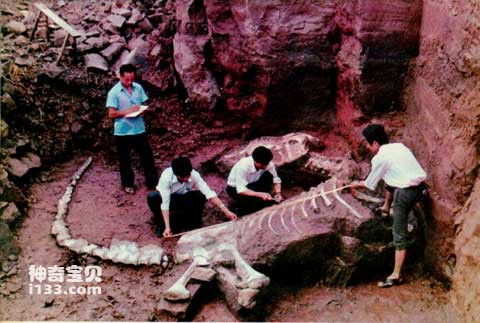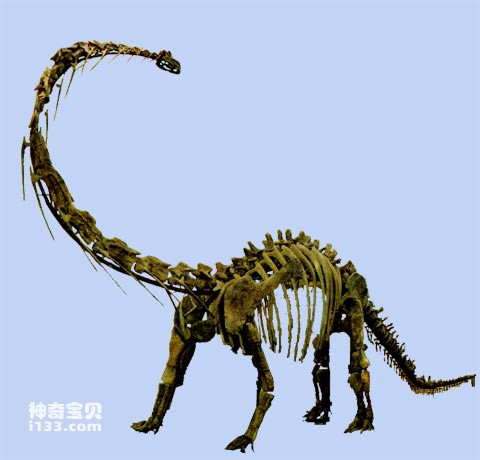About 208 million years ago, a mysterious worldwide disaster caused the extinction of many living things. This disaster heralded the end of the Triassic Period and the beginning of the Jurassic Period.

Dashanpu dinosaur excavation site
What caused this mass extinction? Scientists offer several possible explanations. One explanation is that it may be due to a huge asteroid impacting the earth, or it may be due to changes in the earth's interior causing a series of large-scale volcanic eruptions. At that time, the earth's climate experienced drastic changes, which in turn caused biological changes. of mass extinction. Another explanation is that the disintegration of Pangea at that time caused regional environmental changes in the separated continental blocks, which in turn caused a mass extinction of organisms.
Whatever the cause, the result was that many large reptiles became extinct, while many species of small dinosaurs, small terrestrial crocodiles, and mammal-like reptiles weathered the disaster, survived, and continued to thrive in the years to come. Evolved and developed.
Among these survivors, there is an evolutionary line that points to the subsequent extreme giantization. This is the sauropod family.
The sauropod family must have originally evolved from some kind of paleopod dinosaur in the early Jurassic. However, due to the paucity of fossils of terrestrial vertebrates from the Early Jurassic, we still know very little about the details of the origin and early evolution of sauropods at that time. There may be many reasons for this extreme poverty of fossils, but one reason cannot be ignored, and that is the expansion of the earth's sea area at the beginning of the Jurassic Period. The expansion of sea areas has caused shallow seas to invade the interior of many continents. This phenomenon is called transgression. On the contrary, at a certain period in the history of the earth, the sea area shrank and the original shallow sea floor was exposed and became land. This situation is called regression. Just as the early Jurassic transgression submerged many of the original late Triassic landmasses, the Jurassic land itself had a large desert environment in a very wide area. This can be seen from western North America. The widespread Early Jurassic strata are evidenced by ancient dune deposits. Under such environmental conditions, animals face many unfavorable problems for their survival, as do their burial and fossil formation after death.
The world-wide lack of terrestrial strata and terrestrial vertebrate fossils in the mid-Jurassic has not changed much. However, in the Zigong area of Sichuan Province, my country, nature has left a geomantic treasure land with rich historical relics. This place is called Dashanpu.

Shulong
There are many complete fossil skeletons of vegetarian dinosaurs buried in the rock formations of Dashanpu, as well as many trunk fossils of huge coniferous trees. These dinosaur fossils tell us about the population status of many large dinosaurs (especially vegetarian dinosaurs that walked on four legs) that were unknown in the past. These dinosaurs lived in lowland forests with abundant water. Sufficient food and a suitable environment allowed their bodies to grow to extremely large sizes. Especially those sauropods with long necks can extend their necks to feed on leaves on the tops of trees that are out of reach of other animals.
These sauropods include Shusaurus, Emirosaurus, Emeisaurus and many other species. The fact that so many species were found in the strata of the same place and era shows that sauropod dinosaurs have differentiated into many evolutionary branches in the middle Jurassic. Therefore, it also means that the origin of this large family must have been earlier than the middle Jurassic. era.
animal tags:
We created this article in conjunction with AI technology, then made sure it was fact-checked and edited by a Animals Top editor.